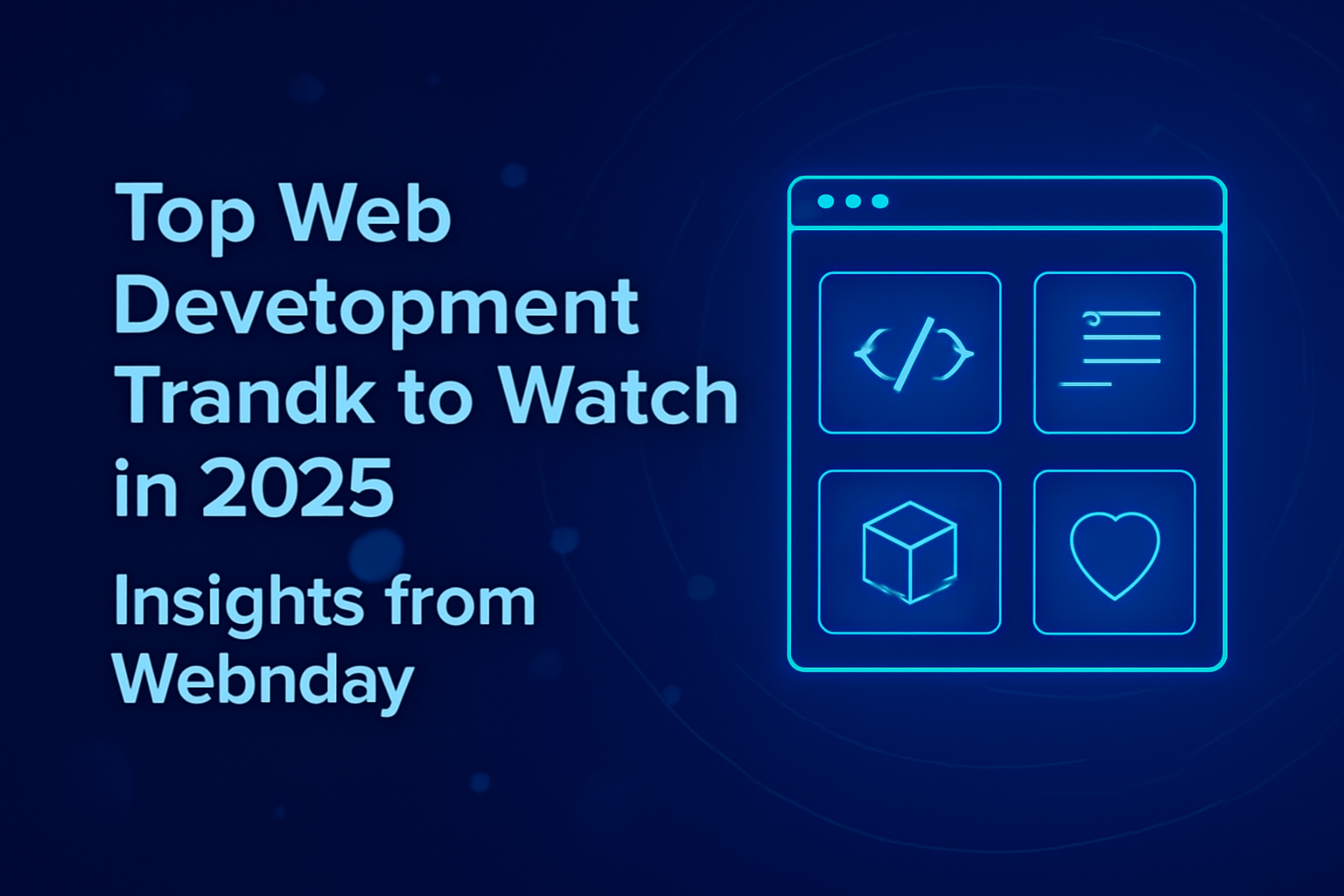
As the digital world continues to evolve, so do the technologies and strategies that drive web development. In 2025, we can expect new trends to shape the way websites are built, designed, and interacted with. At Webnday, we pride ourselves on staying ahead of the curve and adapting to these changes to provide our clients with cutting-edge solutions. Here’s a look at some of the top web development trends we anticipate will define the industry in 2025.
1. AI-Driven Web Design and Development
Artificial Intelligence (AI) is rapidly transforming web development, and by 2025, it will be at the core of many web development processes. From AI-based design tools to intelligent automation in coding, AI will streamline the development process, enhance user experiences, and create more personalized content for users.
At Webnday, we’re already utilizing AI to improve website performance and personalization. Whether it’s through AI-powered chatbots, dynamic content recommendations, or user behavior tracking, we’re making sure that our websites not only meet but exceed user expectations.
2. Voice User Interface (VUI) Integration
With the rise of voice assistants like Siri, Alexa, and Google Assistant, the demand for voice user interfaces (VUI) is skyrocketing. By 2025, VUI will play a pivotal role in web development. Websites will need to be optimized for voice search, allowing users to interact with content hands-free.
Webnday is already exploring ways to integrate VUI into websites, ensuring they are future-proof and easily accessible for users who prefer voice commands over traditional input methods.
3. Serverless Architecture
Serverless computing is a cloud-native development model that eliminates the need for developers to manage servers. This trend is rapidly gaining traction as it simplifies the deployment process, reduces operational costs, and improves scalability. Serverless architecture allows developers to focus on building and deploying applications without worrying about server management.
At Webnday, we’re embracing serverless technology for its efficiency and flexibility. This enables us to deliver faster, more scalable solutions that meet the growing demands of our clients and users.
4. Progressive Web Apps (PWAs) Becoming Mainstream
Progressive Web Apps (PWAs) provide the best of both worlds: the functionality of a native mobile app combined with the accessibility of a website. PWAs are fast, reliable, and can work offline, making them a great option for businesses looking to offer an app-like experience without the need to develop a native mobile app.
In 2025, PWAs will become more mainstream, and at Webnday, we are already integrating PWAs into our projects, offering users an app-like experience directly through the browser.
5. Motion UI and Micro-Interactions
Motion UI is a design trend that focuses on creating fluid, interactive animations to enhance user experience. These animations can be subtle, like a hover effect, or more complex, such as animations triggered by user actions. Micro-interactions, such as animated buttons or notifications, will become even more prevalent in 2025, adding depth and engagement to websites.
At Webnday, we’re incorporating motion UI and micro-interactions into our web designs to create more dynamic, engaging, and user-friendly experiences.
6. WebAssembly for Faster Web Development
WebAssembly (Wasm) is a binary instruction format that allows code written in multiple languages (like C, C++, Rust) to be compiled and run in the browser. This enables faster web applications by improving load times and providing a smoother user experience.
In 2025, WebAssembly will become a more widely adopted technology for building high-performance web applications. Webnday is already exploring WebAssembly’s potential to optimize web performance, particularly for websites that require heavy processing, like gaming and video editing platforms.
7. API-First Development Approach
In 2025, the API-first approach will continue to dominate web development. API-first development focuses on creating robust, scalable APIs that allow seamless integration with other systems and services. By prioritizing APIs from the start, developers can build more flexible and future-proof applications.
At Webnday, we use the API-first approach to build scalable and modular websites that are easy to integrate with third-party tools and services, ensuring our clients’ websites remain adaptable as new technologies emerge.
8. Dark Mode as a Default
With the growing popularity of dark mode across operating systems and apps, it’s becoming a standard feature for websites as well. Dark mode not only provides a sleek, modern design but also offers benefits such as reduced eye strain and extended battery life for mobile devices.
By 2025, dark mode will likely become a default design choice for many websites. Webnday is already offering dark mode options for our clients, allowing users to choose their preferred theme for a more personalized browsing experience.
9. Blockchain Technology and Decentralized Websites
Blockchain technology, most commonly associated with cryptocurrency, is set to revolutionize web development. By 2025, we expect decentralized websites that operate on blockchain to become more common, offering enhanced security, transparency, and control over user data.
At Webnday, we are exploring how blockchain can be integrated into web development to offer more secure, user-centric experiences.
10. Sustainable Web Development
As concerns about the environment grow, sustainable web development is becoming a priority. In 2025, more businesses will demand eco-friendly websites that minimize energy consumption and reduce the carbon footprint. This includes optimizing websites for faster load times, reducing unnecessary code, and choosing green hosting options.
At Webnday, we are committed to sustainable web development practices, ensuring that our websites are optimized for both performance and the environment.

